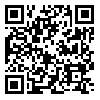Volume 25, Issue 3 (2018)
EIJH 2018, 25(3): 33-48 |
Back to browse issues page
Download citation:
BibTeX | RIS | EndNote | Medlars | ProCite | Reference Manager | RefWorks
Send citation to:



BibTeX | RIS | EndNote | Medlars | ProCite | Reference Manager | RefWorks
Send citation to:
Elahi R, Nojoumian A. The Uncanny Gender: Gender and the Unrepresentability of Subject Formation in Margaret Atwood's Surfacing and Bodily Harm. EIJH 2018; 25 (3) :33-48
URL: http://eijh.modares.ac.ir/article-27-44333-en.html
URL: http://eijh.modares.ac.ir/article-27-44333-en.html
1- Ph.D. Candidate in English Language and Literature, Islamic Azad University, Tehran, Central Branch, Tehran, Iran , Roya.elahi5@gmail.com
2- Associate Professor, Shahid Beheshti University, Tehran, Iran
2- Associate Professor, Shahid Beheshti University, Tehran, Iran
Abstract: (838 Views)
This article is an attempt to study subject formation in relation to gender in Margaret Atwood's (1939- ) Surfacing (1979) and Bodily Harm (1983) within the frame of the uncanny. The issue of gender has been discussed in Atwood's novels from different perspectives but this article claims that what have been rarely discussed in Atwood's novels are the unrepresentable realities in relation to gender which can be foregrounded by dislodging the uncanny. The uncanny which was once a rather minor issue in Freudian oeuvre has been reconsidered in the contemporary era by prominent thinkers, such as Jean-François Lyotard and Julia Kristeva whose ideas are used in elaborating the unrepresentability of gender in this article. The idea of the female sublime is the most significant issue in the context of the uncanny in this article which challenges any representational system of gender formation and problematizes our preconceived hence familiar perceptions of gender formation and reevaluates them in an unfamiliar, dynamic and unrepresentable space.
Article Type: Original Research |
Subject:
Arts and Humanities (General)
Received: 2020/07/10 | Accepted: 2018/06/15 | Published: 2018/06/15
Received: 2020/07/10 | Accepted: 2018/06/15 | Published: 2018/06/15
Send email to the article author
| Rights and permissions | |
 |
This work is licensed under a Creative Commons Attribution-NonCommercial 4.0 International License. |







